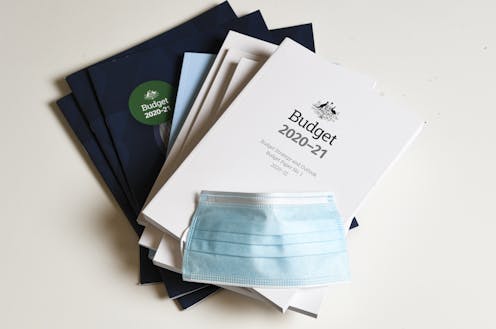The budget's tax cuts have their critics, but this year they make fiscal sense
- Written by Richard Holden, Professor of Economics, UNSW
 AAP/Lukas Coch
AAP/Lukas CochThis year’s budget is something of a play in two acts. Act one involves large economic stimulus to help plug the hole in output generated by the coronavirus pandemic. Act two tries to set Australia up for a bounce back in economic growth and employment that involves more than just waiting for the pandemic to end.
The headline...
Read more: The budget's tax cuts have their critics, but this year they make fiscal sense














